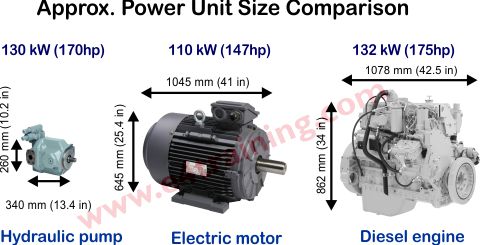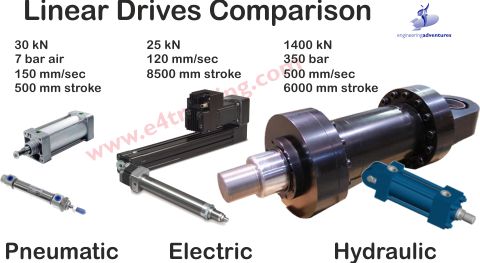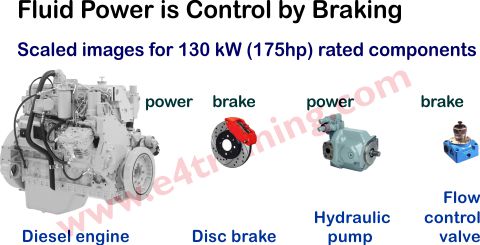Self-study lesson plans and training record download page.
High power to weight ratios

Hydraulic equipment is capable of much higher power densities than both electrical and pneumatic equipment.
Hydraulic pumps and motors can transmit high powers through a very small frame size. Pump and motor sizes are much smaller than the equivalent power electric motors or i.c. engines. High power to weight means that hydraulic components can be mounted in much smaller locations e.g. inside wheels or on moving cranes booms.
High linear thrust power

Hydraulic systems have the highest power linear actuators. This means they can push higher loads at faster speeds than electric or pneumatic actuators.
Control through braking

A car brake decelerates at a similar rate to which it accelerates, even though the brake itself is much smaller in size. Similarly, hydraulic systems control loads by braking or restraining them and hydraulic flow control valve brakes are smaller again than hydraulic pumps.
Higher duty and longer life
Provided the hydraulic fluid is kept perfectly clean, hydraulic systems can also work for much longer or through more cycles than mechanical drives. This is because the metal surfaces never touch as they are always separated by a thin film of fluid.
Flexible mounting locations
As well as having smaller sized pumps and actuators, hydraulic components are supplied by small pipework that can be routed into the tightest of spaces. This combination allows for a multitude of more versatile and flexible applications.